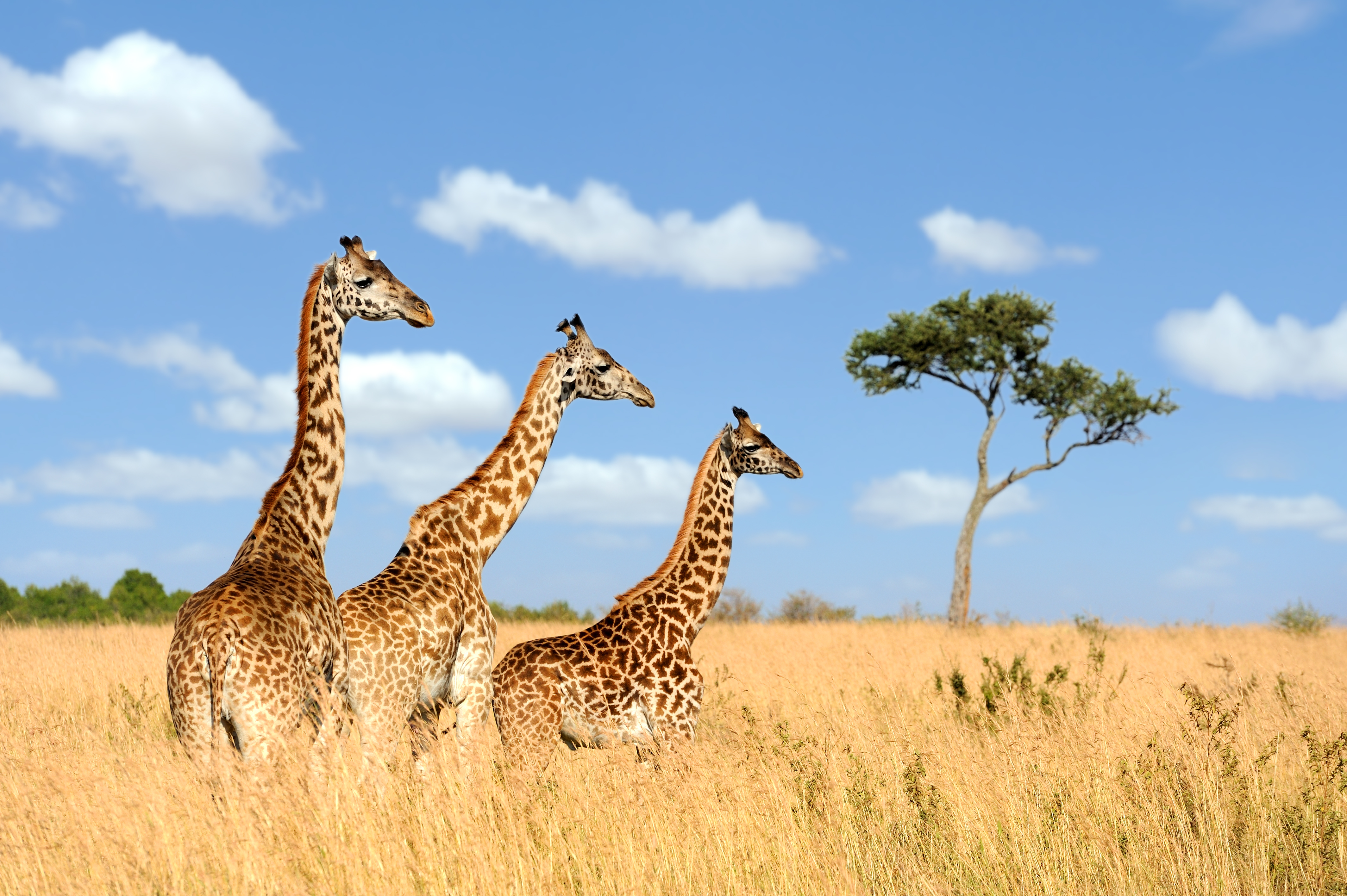Masai Mara, located in southwest Kenya, is a national reserve renowned for the Great Migration, where over a million wildebeest, zebras, and other herbivores traverse its plains each year from July to October. The reserve, covering about 1,510 square kilometers, is part of the larger Serengeti ecosystem and features vast grasslands and riverine forests. Historically, the Masai Mara has been home to the Maasai people, who have lived and coexisted with the region’s wildlife for centuries. Their traditional pastoral lifestyle and intricate beadwork contribute significantly to the cultural tapestry of the area. Notable landmarks within the reserve include the Mara River, famous for spectacular wildebeest crossings often plagued by waiting crocodiles. The reserve's geographical location along the equator provides it with a mild climate, characterized by warm temperatures throughout the year and distinct rainy and dry seasons.
One of the unique features of Masai Mara is its exceptional biodiversity, harboring the Big Five – lions, leopards, elephants, rhinoceroses, and buffaloes, as well as cheetahs and hyenas. The reserve is also an avian paradise with over 470 bird species. The annual Great Migration is the most famous event associated with Masai Mara, drawing tourists worldwide who seek to witness this natural spectacle. An interesting fact about the Masai Mara is the significant role it plays in conservation efforts and sustainable tourism, involving collaborations between the Maasai community and conservation organizations to protect its unique ecosystem while benefiting the local economy.
 Byrdyak, CC BY-SA 4.0, via Wikimedia Commons
Byrdyak, CC BY-SA 4.0, via Wikimedia CommonsKenyaAfrica
Nearby Places
Serengeti National Park(104 km)
Vast savanna known for annual wildlife migrations.Lake Natron(182 km)
Red lake with flamingo colonies offering striking natural beauty and unique ecosystems, central to local Maasai culture. Home to the rare Ol Doinyo Lengai volcano.Ngorongoro Crater(210 km)
Natural amphitheater with abundant African wildlifeLog in to write a review.
Sustainable Travel Tips
Plan Mindfully
- Choose direct flights when possible
- Travel during off-peak seasons
- Pack light and bring reusables
- Prefer eco-friendly accommodations
At Your Destination
- Use public transport or walk
- Support local businesses
- Respect wildlife and habitats
- Choose activities with minimal impact
Daily Habits
- Reuse hotel towels
- Take shorter showers
- Turn off lights/AC when out
- Carry a reusable water bottle
